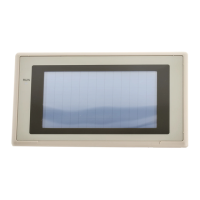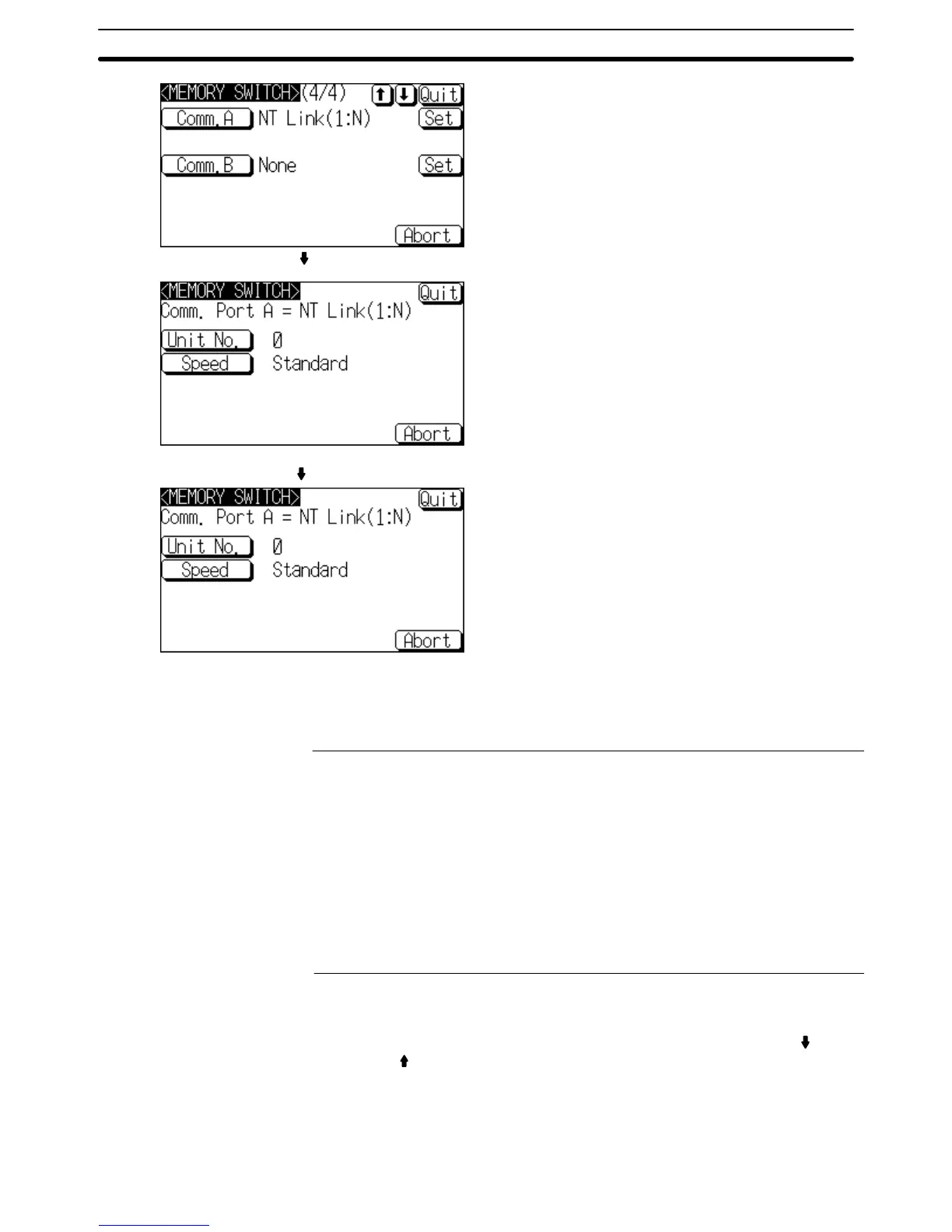6-7SectionSetting Conditions for Communications with Host by Using Memory Switches
131
Press the Unit No. touch switch to display
the
unit number to be set. Press the Comm.
Speed
touch switch to display the baud rate,
standard or 115.2-kbps high-speed. (The
Comm. Speed setting determines which
method of 1:N NT Link is used.)
The
communications setting on
the right will
change each time that the touch switch is
pressed. In this example, serial port A is
used for a standard 1:N NT Link.
Press Quit.
The unit number and baud rate are set.
Press
the Set touch switch to the right of the
port at which the setting has been made.
In this example, serial port A is used.
• To quit the unit number/baud rate setting screen without confirming the unit
number/baud
rate settings, press the
Abort touch switch. The NT21 will return
to
the memory switch setting screen (4/4) with the previous settings still in ef
-
fect.
Reference: Unit numbers are numbers assigned to each PT when multiple PTs are con-
nected
to one host, so that the host can identify the individual PT
s. The unit num
-
bers that can be set differ according to the host model, as follows.
S C200HE(-ZE):
Unit numbers 0 to 3 (maximum of 4 PTs per host port)
S C200HG(-ZE), C200HX(-ZE), CS1G/H(-H), CJ1G, CQM1H:
Unit numbers 0 to 7 (maximum of 8 PTs per host port)
When making the settings, make sure there is no duplication of unit numbers
among PTs.
On
completion
of unit number/baud rate setting the NT21 returns to the memory
switch setting screen (4/4).
To set other memory switches, select the relevant screen using the [
] (next
screen) or [
] (previous screen) touch switch, then make the setting.
• To confirm
the settings and quit the memory switch setting screen, press the
Quit
touch switch. The settings made last will be set and the NT21
will return to
the MAINTENANCE MODE MENU screen.
If
the combination of settings for serial port A and serial port B is not allowed,
an

